The same as the most famous bespoke shoemakers in West end London, speaking of current popularity and exposure, George Cleverley wins for a hundred miles. John Lobb St. James is very low key but the undeniable king, never begs for orders. George Cleverley sharpens its head to cut into Hollywood, in the whole series of Kingsman, you can find its shoes. This is the achievement made by the junior owner, Glasgow II, and unfortunately brought a nickname of George Cleverley in enthusiast community, “Beautiful Wife”. Because the junior is so unsettling and whenever there is some customers ask too many questions, especially technical questions about shoemaking, he asks “do you have a beautiful wife?” The hidden meaning is our clienteles are all Hollywood movie stars, American billionaires, they all have beautiful wives (maybe lovers), if you don’t, you are not our targeted customer, get lost.
George Cleverley is famous for its eponymous founder learned shoemaking under legendary Nikolaus Tuzcek, and brought chisel toe to more popularity. And some recent emerging independent bespoke shoemakers add woods to the fire as they apprenticed in George Cleverley and certainly inherit the chisle toes. This brand has long been out of the hand of the family, and the real shoemaker is John Carnera, a respectable last maker in England, if not in the world.
So the junior is so arrogant for nothing. None is his.
Business wise, it recently bought the factory from bankrupt Alfred Sargent to make its Ready to Wear which previously made by Crockett & Jones, put huge efforts to please Americans, maybe someday will be acquired by house of brands. LVMH has Berluti, Prada has Church’s, so Kerring is potential. But if this road is blocked, A quality brand chasing fashion? I don’t see good end.
OK, that is too much for background, grouch in fact, let us just look at the shoes.
Pattern

Five eyelets cap toe oxford, dark brown boxcalf, except they are not black, everything is for me.
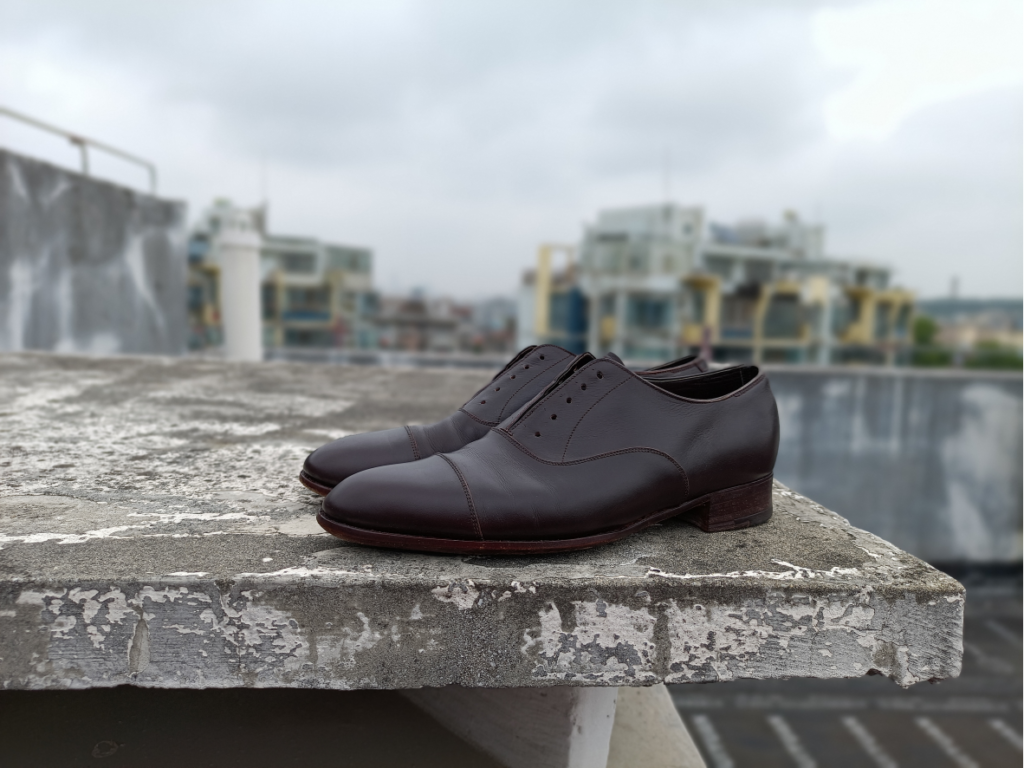
Nothing worth mention on the design, every detail is so common even in Ready to Wear. I shall say that if you check cap toe oxford from any RTW brand, the design may be more interesting than this pair. I am not criticising, this classic one is great.
Leather
The leather looks so supple that I thought this is a pair of trial/fitting shoes by the first sight.
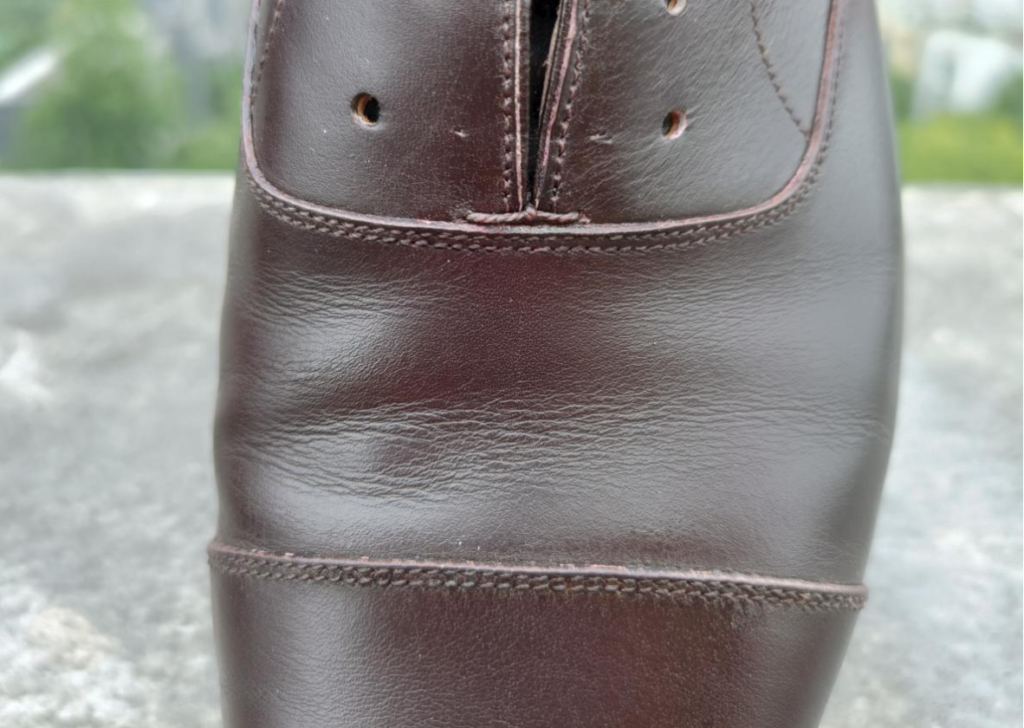
Creases are above average, if this is RTW, it is great, but in bespoke, just ordinary to say the best as bespoke is “an art of waste” (quote from Justin FitzPatrick, ShoeSnob).
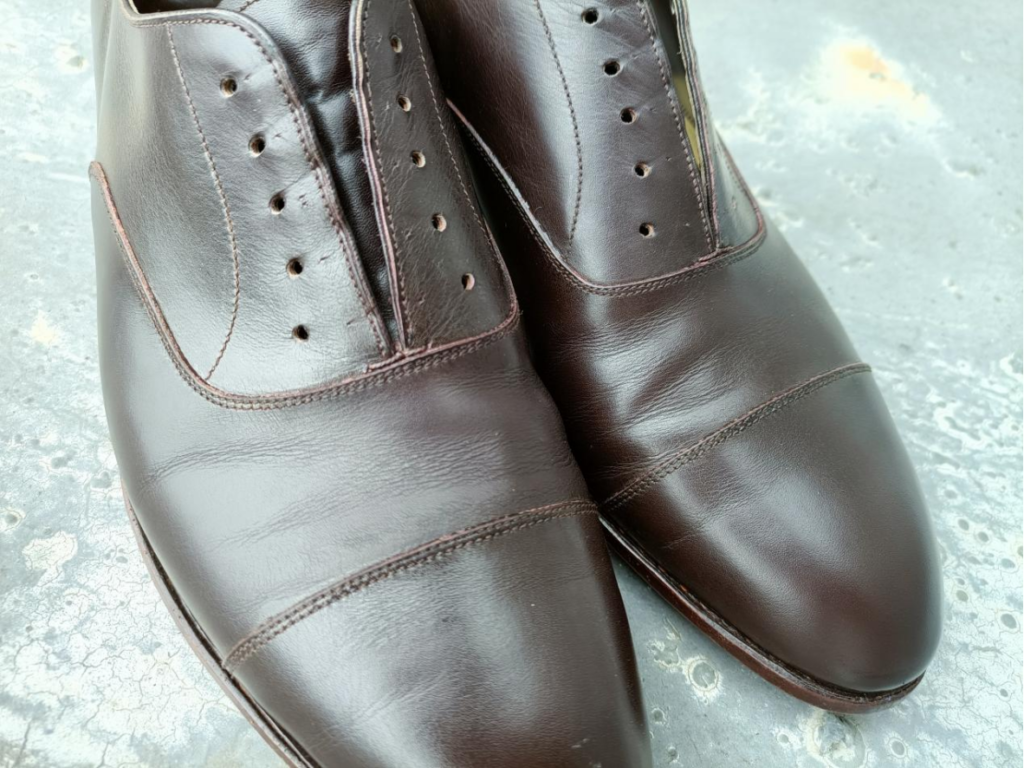
I have some pairs of bespoke shoes from Europe, they all have very soft leather, I think comfort is maximised.
Last
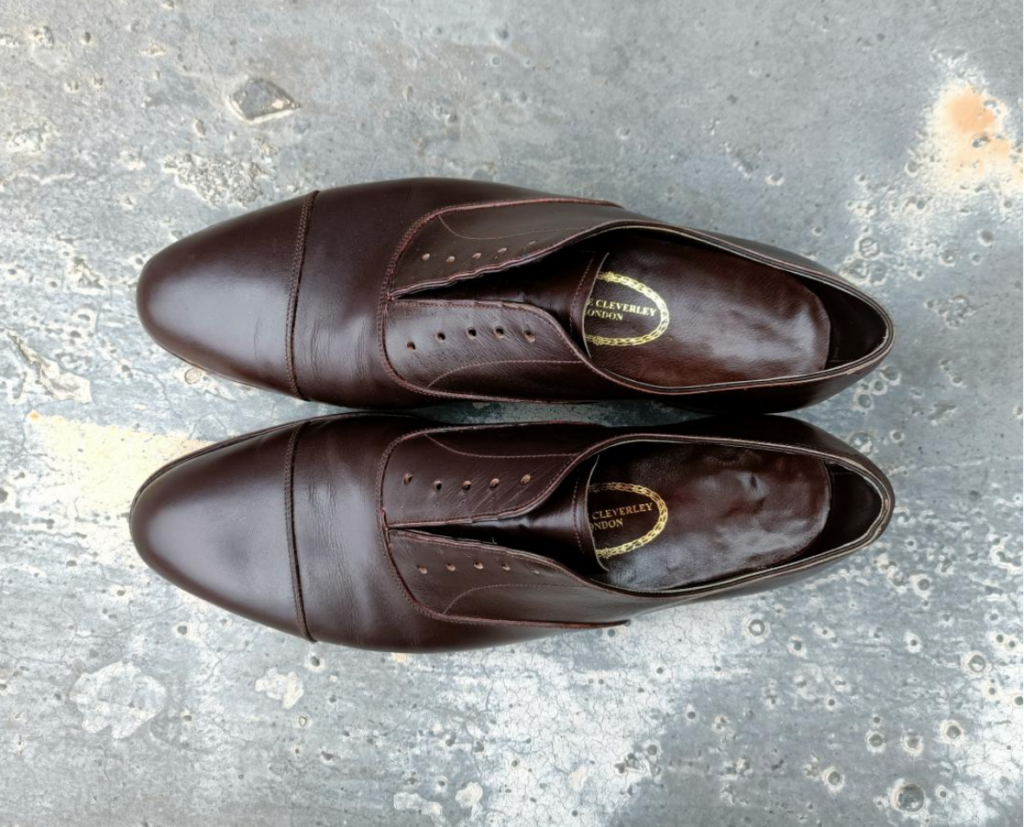
Last is the most interesting aspect on this pair, because it says nothing about the iconic George Cleverley.
George Cleverley is famous for its square chisel toe, just like long and sharp toe when speaking of Gaziano & Girling. But if you glance the bespoke works from Gaziano & Girling, you will find big round toes occupy a large portion. So it is understandable that non chisel toe is also normal in George Cleverley bespoke archive.
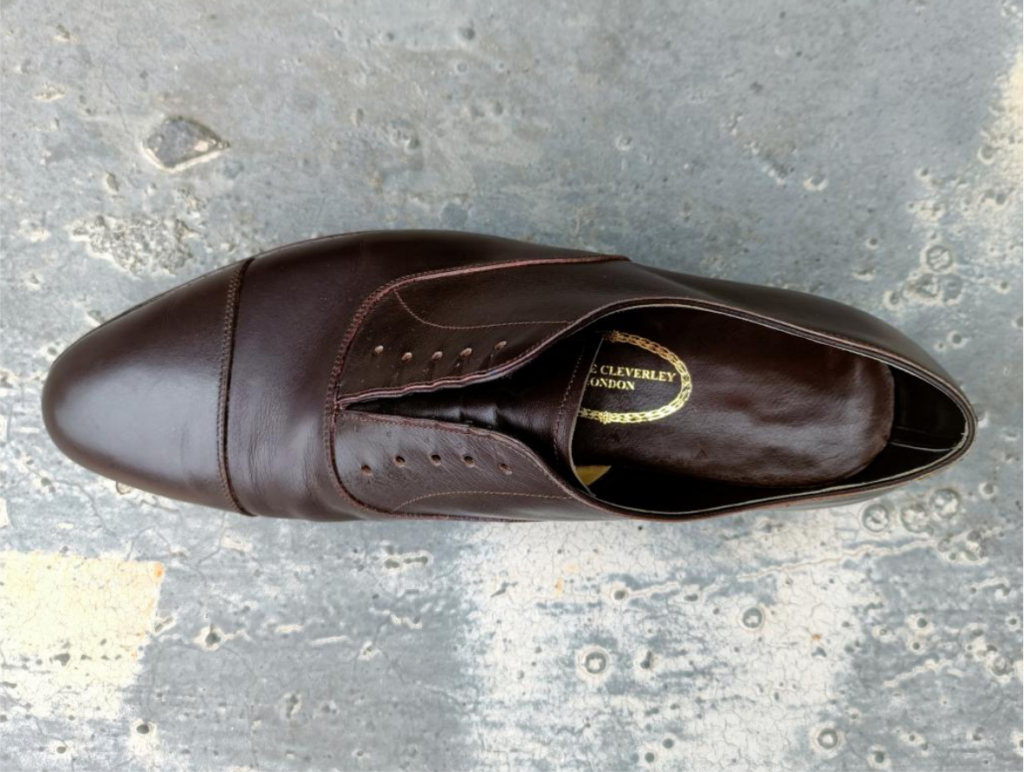
Except it is not square chisel, the banana shape is the focal point. Banana last is the statement of mid Europe, no matter it is Maftei from Austria or Ed Meier from Germany who all agrees banana last mimics the outline of foot the best. Tuzcek is a Czech immigrant so he brought this element to England is not a coicidence.
Banana last fits the feet better with a shortcoming which is somehow ugly from some angle. In English shoes, there is one last regarded as great banana last (it is not very banana though), that is last 202 from Edward Green.
Out Sole
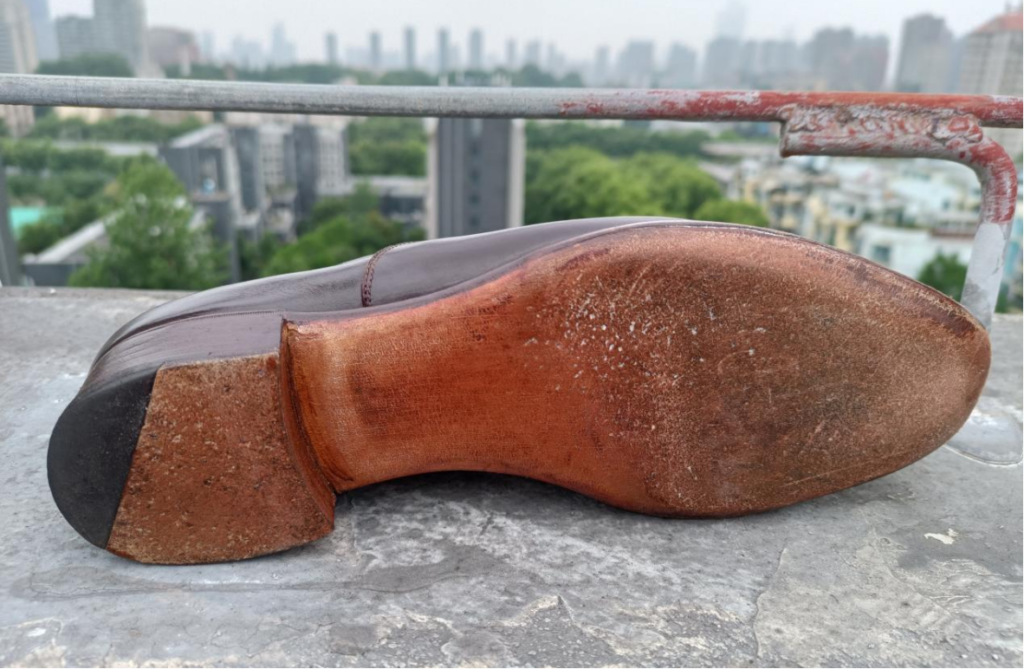
Almost the perfect example from a textbook if there is any on shoemaking. London waist, bevelled, and the transition from forefoot to waist is very gentle.
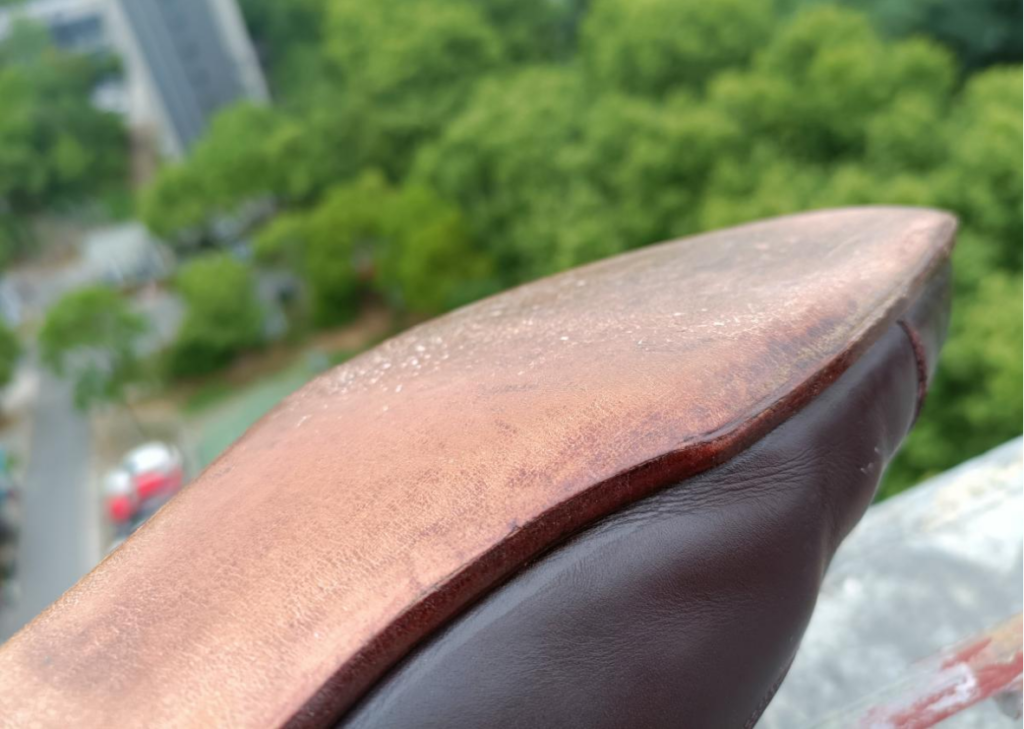
Suddenly I found something very unusual. why the center is clearly worn but the edge is intact?
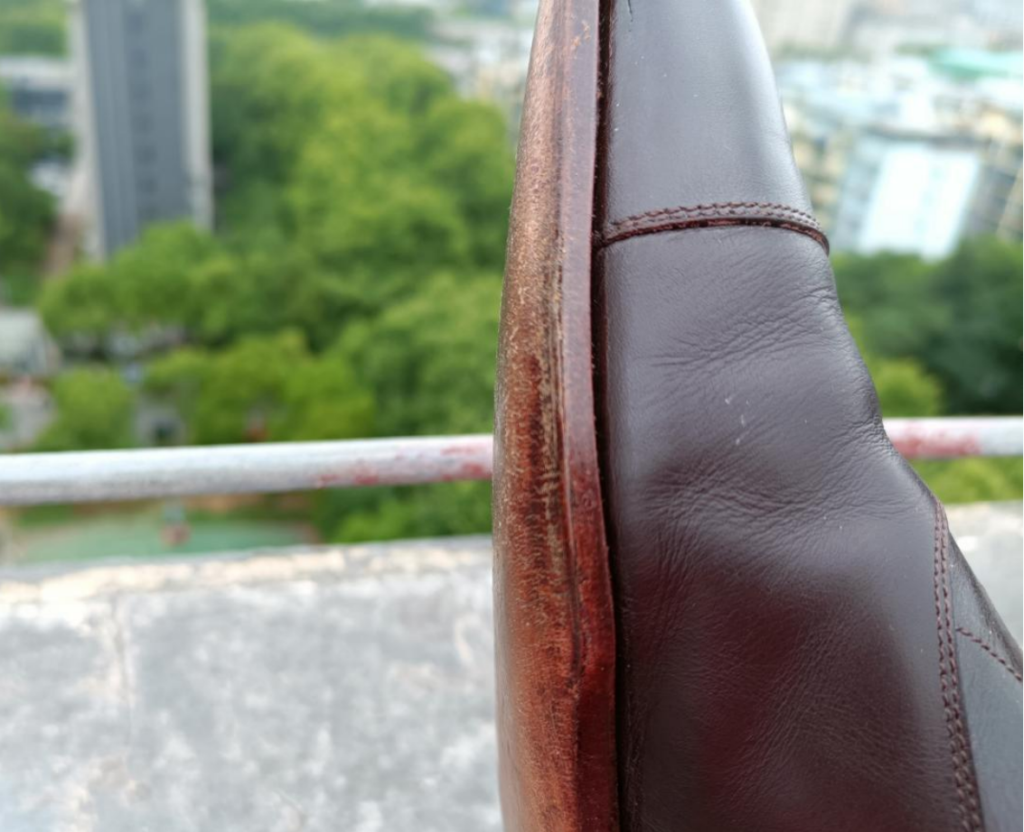
From the profile, we can see the center bulges, so the edge is higher than the center. Why and How? Check Welt section just follows.
Welt
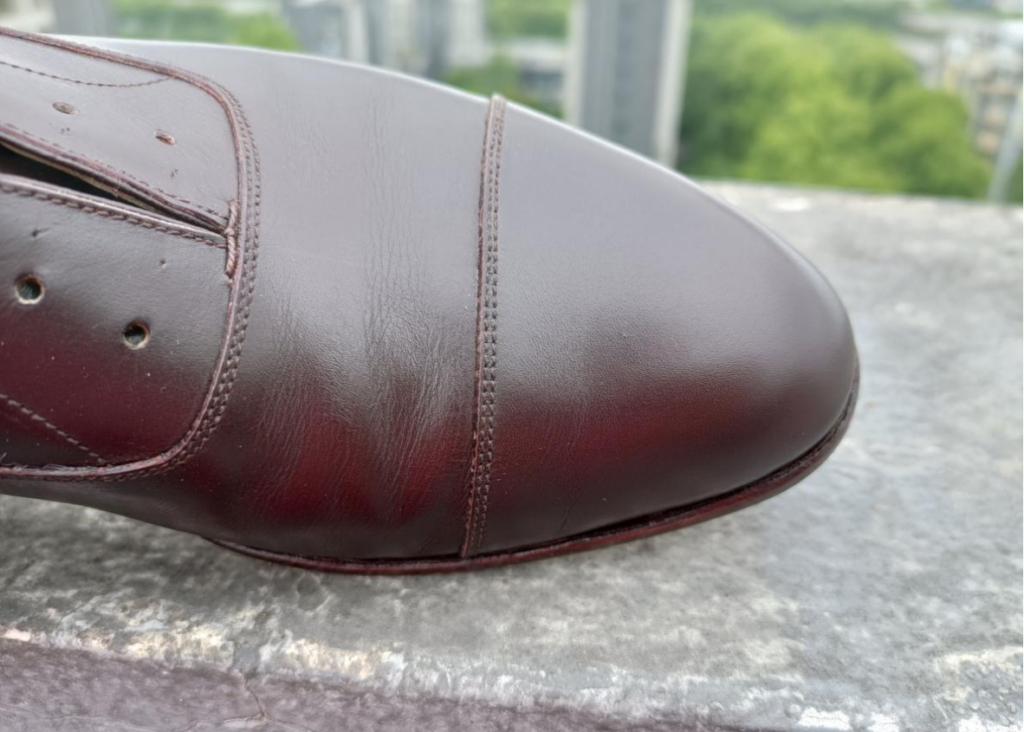
Can you see the stitches on welt? With this hint, can you guess why the center is higher than edeg of the sole? OK, the answer is full blind welt.
If you feel full blind welt is hard to understand, think blind waist, then expand this technique to the whole circle of welt.
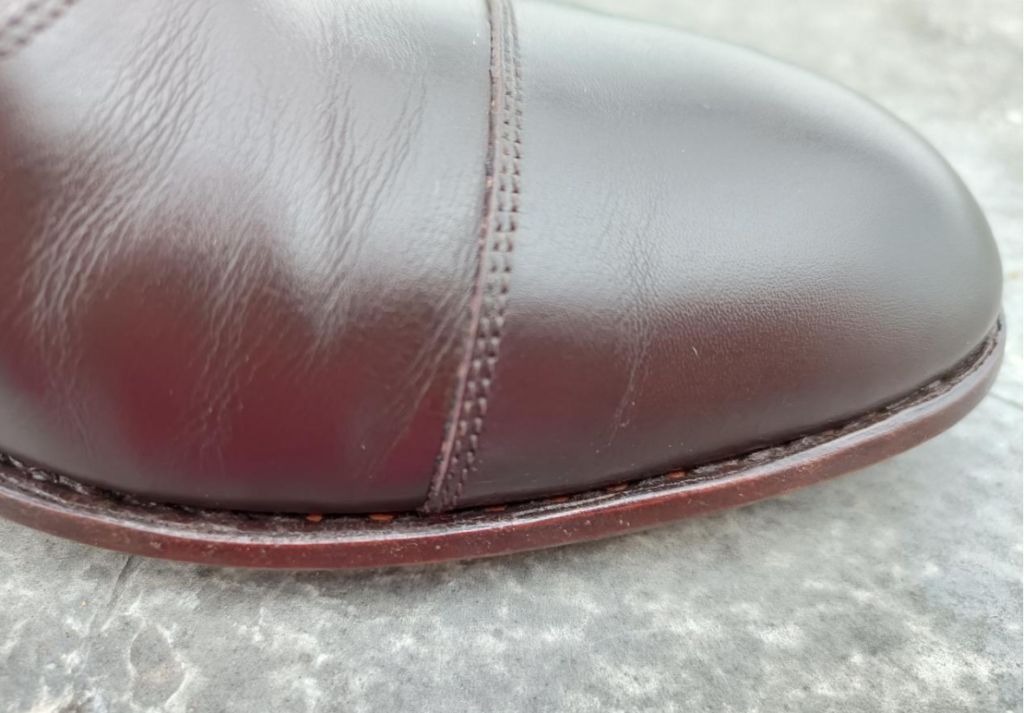
I found an angle and saw through, the stitches can be seen and density is quite loose.
Actually when I saw this shoes, I was not sure about why the sole is like that, and consulted with bespoke shoemaker CHEN Hua, he told it is full blind welt without hesitation.
But I have seen full blind welt on Maftei for several times, why this one is different.
check this video to see: Full Blind Welt from Maftei
And the density of the stitches is normal or just too low?
CHEN Hua told that the stitches can be seen is because the forming the sole edge wasn’t done enough, but the stitch density is normal for a full blind welt as it is not supposed to be seen.
CHEN Hua owns George Cleverley bespoke as well, although his pair is better than this pair craftsmanship wise, the variation is still too big. The reason is it uses many outworkers.
Heel
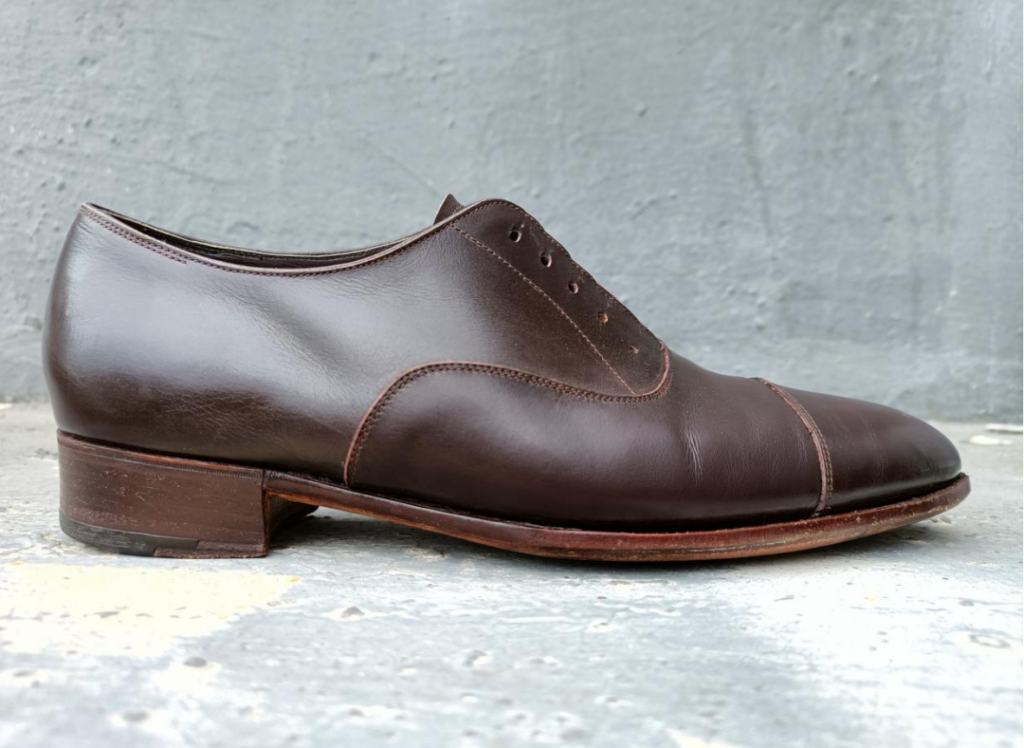
The profile can tell two things, one is the hand lasting, how heel upper sits on the heel. The other is the height of the heel of this pair.
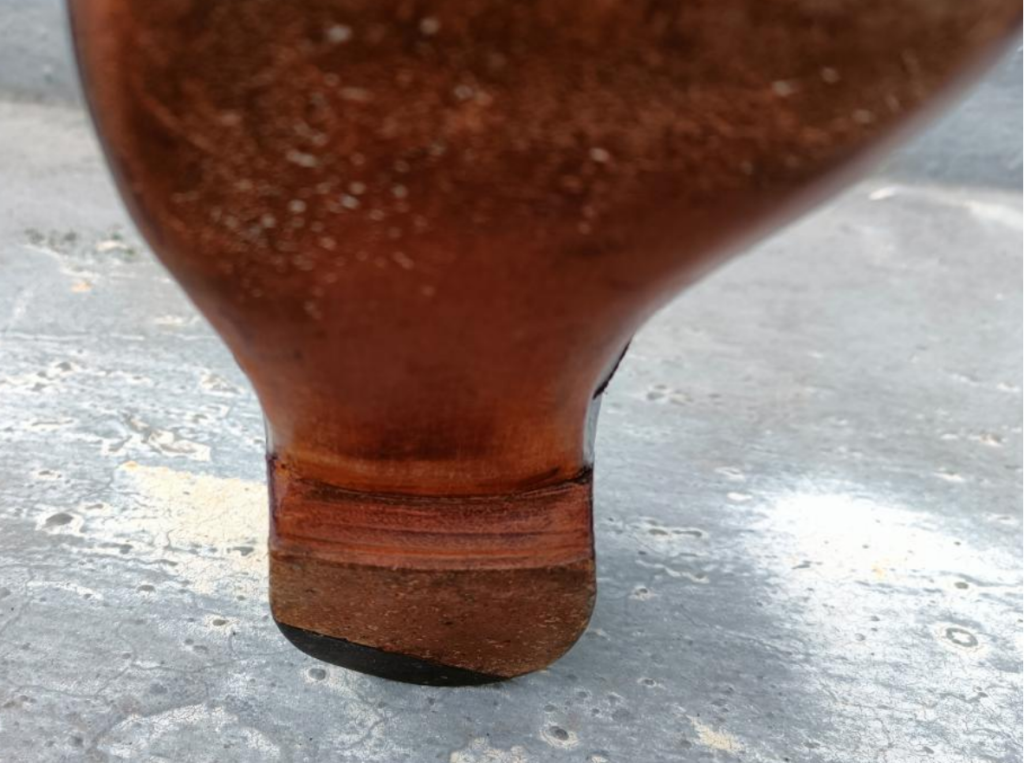
We saw stacked heel on that pair of Henry Maxwell from the same angle, that one feels with inadequate height. In fact it is not low but the stacked leather matches the outsole shape. Then why this pair does not seem low as well, doesn’t the stacked leather match the ousole shape? It does, but full blind welt construction makes the welt higher than usual, to achieve harmony, more layers of stacked leather to make heel more heightened.
Details
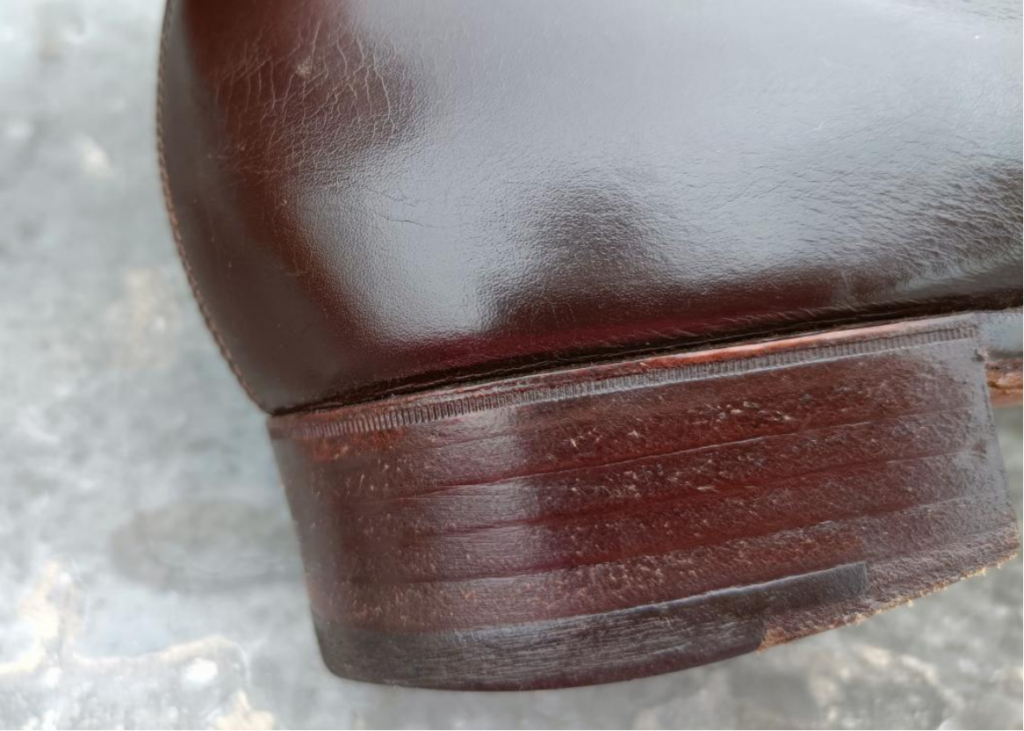
The decorative teeth on the heel is the finest I have ever seen. Marvelous.
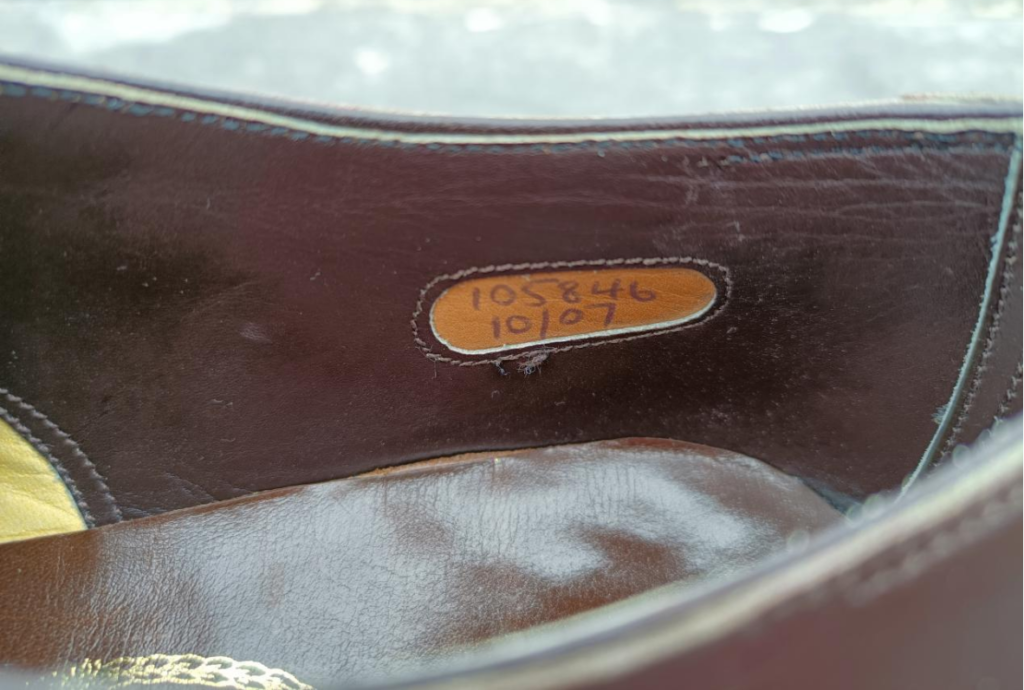
Is there any mark one a pair of bespoke shoes? The answer is positive, no matter which maker it is, you can find some numbers on the shoes, the purpose is not to inform anything to the customer, but to coordinate production.
Most I have seen are in unnoticeable places, such as deep inside of the lining. The window like Ready To Wear is the first time I saw.
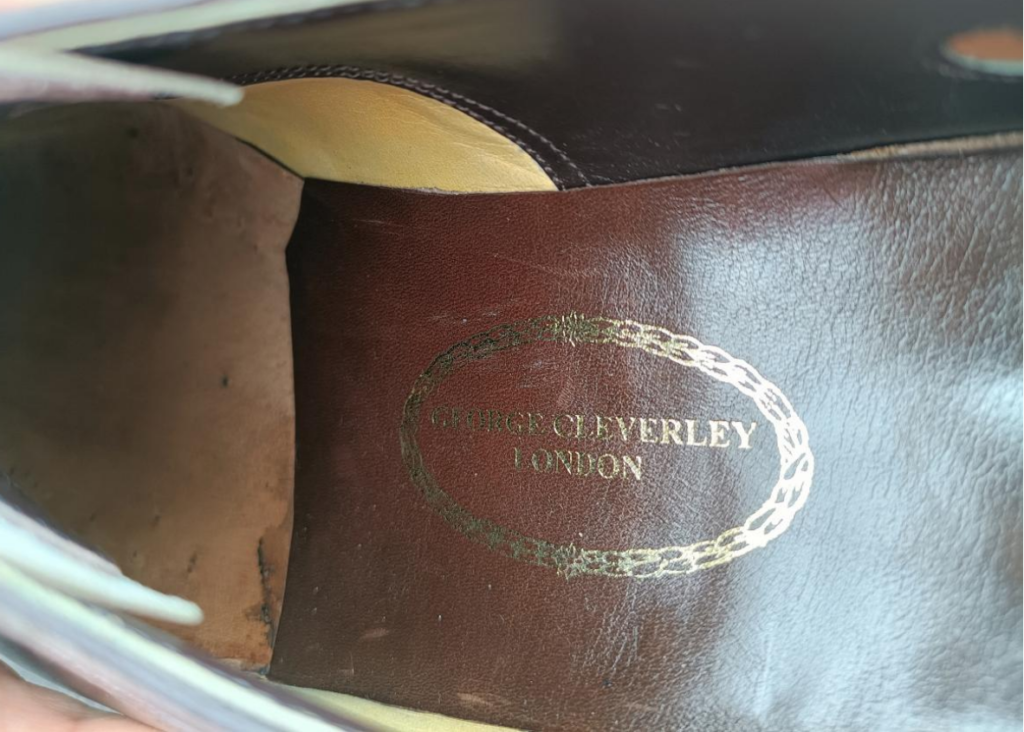
Another usual for Ready to Wear but unusual for bespoke is the sock lining, most bespoke shoemakers use full length to cover the midsole with handwelting bumps, George Cleverley use half length.
Functionality wise, which one is more wet absorbing? Chorme tanned or Vegetable tanned?
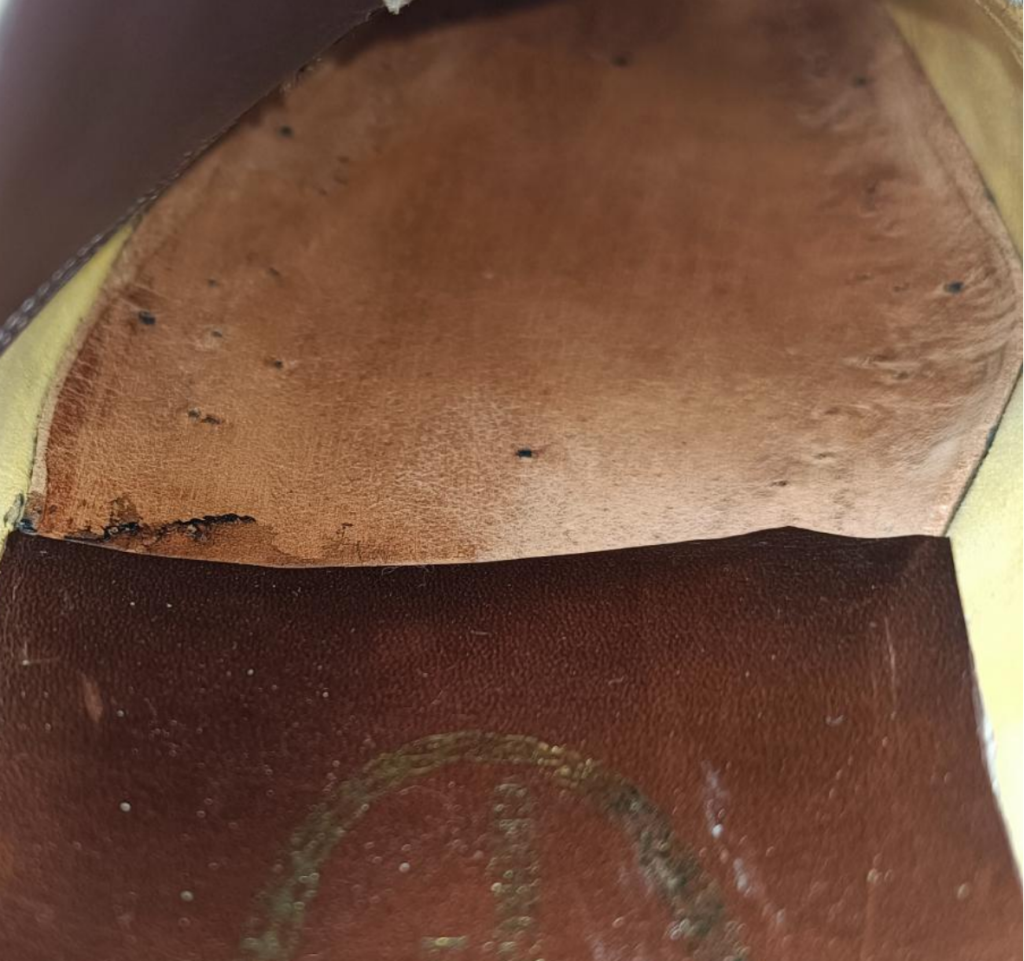
The bump of handwelting is not very prominent, and we can see some mark of nails, I don’t know how to interpret.

Green lining leather is funny.
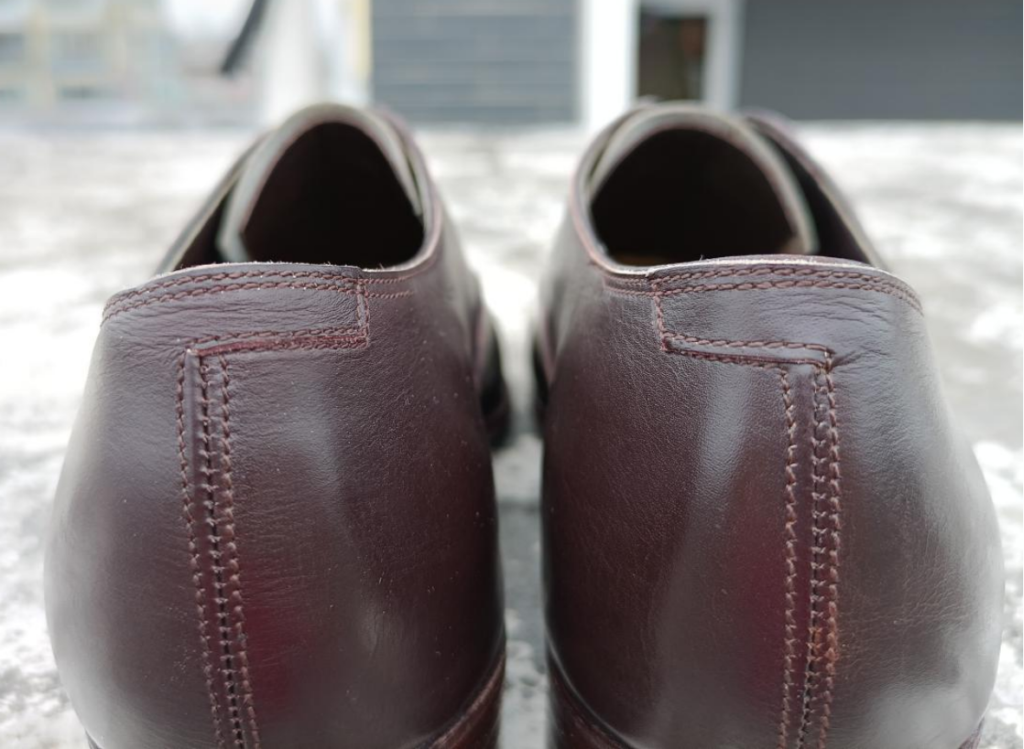
Back seams is the English default pattern, Dog Tail, however, this tail is square and longer than most seen. This is a great brand distinguishing point.
Fit
Lace area is without V shape and no pressure on my small toe, only the small round toe is not very good looking.
Remark
Colour and pattern will be my most go-to shoes, I wish to wear the sole up and resole to a rubber sole, but CHEN Hua told me that the welt needs to be replaced as well, what a cost!

